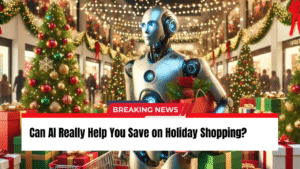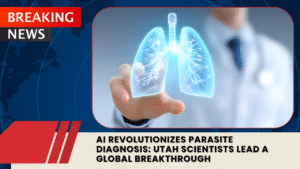As artificial intelligence reshapes industries across the world, one question is echoing in offices, classrooms, and workshops alike — is any job really safe from AI?
Researchers and educators in Utah and beyond are exploring that question through both data and lived experience. Their findings suggest that while automation is accelerating, not all human work can be replicated by machines — at least, not yet.
Measuring What Makes a Job “Human” Not AI
Computational social scientist Isabella Loaiza, alongside MIT economist Roberto Rigobon, developed a framework to measure a job’s resistance to automation. Working with data from the U.S. Department of Labor’s O*Net Database — which tracks more than 900 occupations and 19,000 workplace tasks — they created what they call the EPOCH score.
EPOCH stands for Empathy, Physical presence, Opinion or judgment, Creativity, and Hope or leadership. Each element represents a distinctly human trait that’s hard for AI to mimic. The higher a job’s EPOCH score, the lower its risk of replacement.
Their study found that jobs requiring emotional intelligence and decision-making under pressure — such as nurses, social workers, emergency managers, and educators — are less likely to be automated. Positions emphasizing social connection or complex problem-solving, from kindergarten teachers to CEOs, also fared well.
In contrast, paper-heavy roles like mail clerks, meter readers, and tax preparers scored lowest, given their repetitive and data-driven nature.
The Grey Zone: Hands-On Jobs and Database Limits
Some surprising results emerged. Occupations like plumbers and flooring installers ranked poorly, not because AI can replace them, but due to gaps in the O*Net database — it doesn’t always account for physical presence. “Those jobs are safe for now because they require someone to be on-site,” Loaiza said.
Still, she warned that predicting the future remains difficult. “It’s hard to know what AI will be capable of in 10 or 20 years,” she noted.
How AI Is Already Shaping Creative Fields
For many artists, filmmakers, and designers, AI’s reach already feels personal. Aimee Watson, a University of Utah art student, pivoted to Film and Media Studies after seeing AI-generated visuals created with Midjourney that surpassed her hand-drawn work. “They were visually above my skill level and took minutes, not days,” she said.
Even advanced professionals are adjusting. Matt Hoffman, an artist at BluFire Studios in Orem, spends hours crafting digital dragons and cinematic effects — creations that new tools like OpenAI’s Sora 2 can now produce in minutes. “AI dragons have the detail and polish that used to take months and millions of dollars,” Hoffman said. “It’s incredible, but it’s also devastating for artists who’ve spent careers perfecting their craft.”
Yet, some educators are embracing change. Watson now assists in Kenneth Collins’ AI filmmaking class, which may be one of the first in U.S. higher education to fully integrate AI into film production. Students learn to use AI for scriptwriting, video, audio, and even music generation.
“I think students need to know what’s coming,” Collins said. “You don’t have to use AI, but you need to understand it.”
The Career Shift for Tech Professionals
AI’s influence isn’t limited to creative fields. Ishan Sharma, a computer science student, has begun prioritizing machine learning and large language model coursework over traditional programming. “You have to adapt,” he said.
Some data suggests the shift is already underway. A Stanford University study found that IT workers aged 22–25 in AI-exposed roles experienced a 13% relative employment decline. But Mary Hall, a computer scientist at the Kahlert School of Computing, cautions against jumping to conclusions.
“It’s not clear that AI is directly causing those changes,” Hall said. “There are always larger economic factors. AI can generate code, but only humans can verify whether it’s correct.”
She advises students to pursue hands-on experience and expand their skills into industries where technology and human expertise intersect — like finance, engineering, and data analytics. “Companies are hiring for hybrid talent — people who understand both computing and real-world applications.”
Learning to Work With AI
Across disciplines, experts emphasize a similar message: learn AI, don’t run from it. Law students at the University of Utah are already using LexisNexis+, an AI-powered legal research tool.
Attorney and data scientist Bennett Borden compares the shift to the NASA era depicted in Hidden Figures. “Once humans did all the math by hand. Then they learned Fortran,” he said. “Today, learning AI tools is the same kind of leap. It’s how you set yourself apart.”
Focus on What Machines Can’t Replicate
Hollis Robbins, an English professor who writes about AI in her newsletter Anecdotal Value, encourages students to build on their unique insights. “If you want to be a sports journalist, AI can give you stats,” she said. “But only you can explain why people love the game, what makes a moment magical, or what the crowd feels.”
That human perspective — emotional intelligence, empathy, and meaning-making — remains irreplaceable.
As Loaiza summed up, “You probably won’t be replaced by a machine yet. But you might be replaced by another human who knows how to work with one.”
Her advice? Invest in both your human skills and your ability to collaborate with AI. In the emerging world of work, adaptability may be the most valuable trait of all.


